Porsche has Taycan thermal management to new heights with its EV
- PostedPublished 29 October 2019
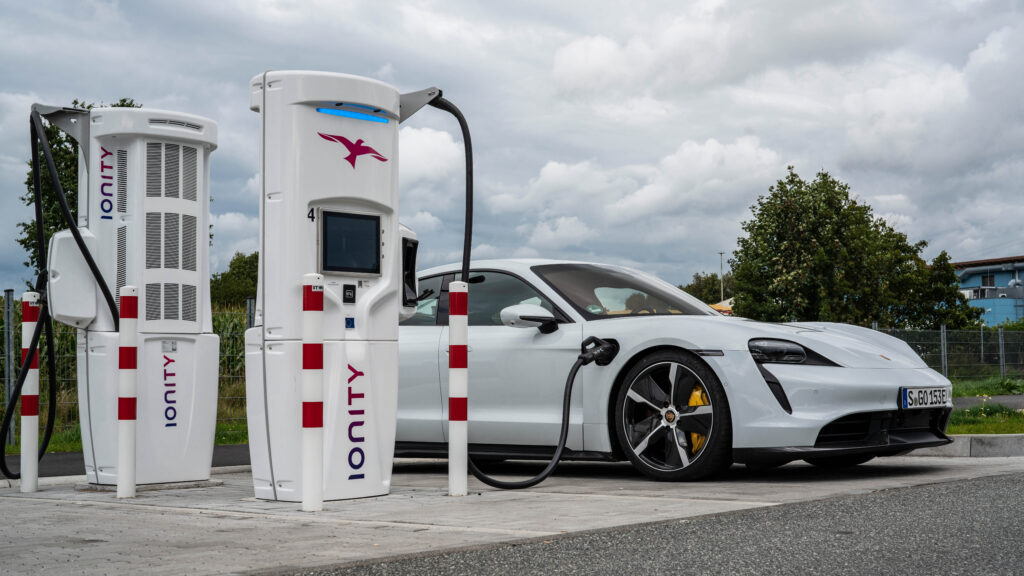
The Porsche Taycan pictured above is hooked up to an Australian-made ultra rapid charger capable of zapping a colossal 350kW into the battery of an electric vehicle, provided it is capable of handling this level of throughput.
Porsche has engineered the Taycan to take a not-inconsiderable 270kW of charge when plugged into the right 800-volt equipment (this is the first production EV to run an 800v architecture), adding 100km of range in just over five minutes.
Being a Porsche, not only the charging is fast. In top Turbo S trim, it can repeatedly dash from 0-100km/h in just 2.8 seconds, enabled by an overboost function that bumps power output to 560 kW.
The Taycan also generates up to 265kW of energy under regenerative braking.
All this generates plenty of heat and, more specifically, rapid temperature fluctuations.
Porsche, of course, has thought this through and has designed the Taycan’s battery pack as a buffer against thermal shocks by making it an integral part of the vehicle cooling circuit.
The battery pack dissipates as little heat as possible into the outside air, capturing waste heat from liquid-cooled high-voltage components.
At the same time, it sets its own optimum operating temperature based on weather conditions, how the Taycan is being driven or how it is being charged.
Power consumption of the air-conditioning system and thermal requirements of driveline are also calculated based on ambient temperature, humidity and sunshine loading.
Thermal & aerodynamic efficiency
Managing thermal requirements so precisely has helped the Taycan to be Porsche’s slipperiest production model with a drag coefficient of just 0.22.
Having an electric drivetrain with no hot exhaust system also enabled a complete shrouding of the underbody and fitment of a much wider rear diffuser.
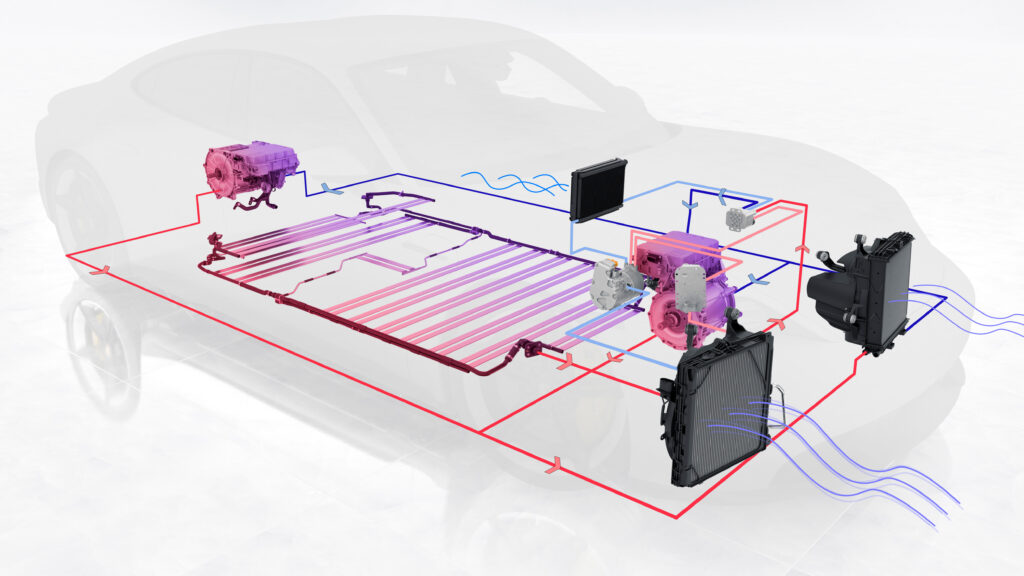
Rather than a large centrally mounted front heat exchanger pack, a pair of radiators are located at the outer edges of the Taycan’s nosecone so they can share airflow with the brakes.
Individually controlled flaps balance drag and cooling requirements, even reacting to thermal monitoring of the brakes.
Regenerative braking
Unlike most EVs, the Taycan does not start capturing kinetic energy from deceleration until the brake pedal is applied.
But when it is, there is enough regenerative deceleration on tap for 90 per cent of everyday brake usage.
It is so effective that Porsche places a six-year expiry date on the Taycan’s brake pads as they are likely to be used so little.
When you absolutely stand on the brake pedal, however, the Taycan deploys its massive 10-piston, aluminium monobloc callipers on some big 420mm rotors.
Porsche says this strategy of coasting under throttle-off conditions and using the brake pedal to initiate energy recuperation provides a more predictable drive experience and greater efficiency.
Hairpins are cool
In the Taycan’s electric motors, rectangular wires have been used to produce the solenoid coils, then bent before being installed in the stator core before the open ends are laser welded.
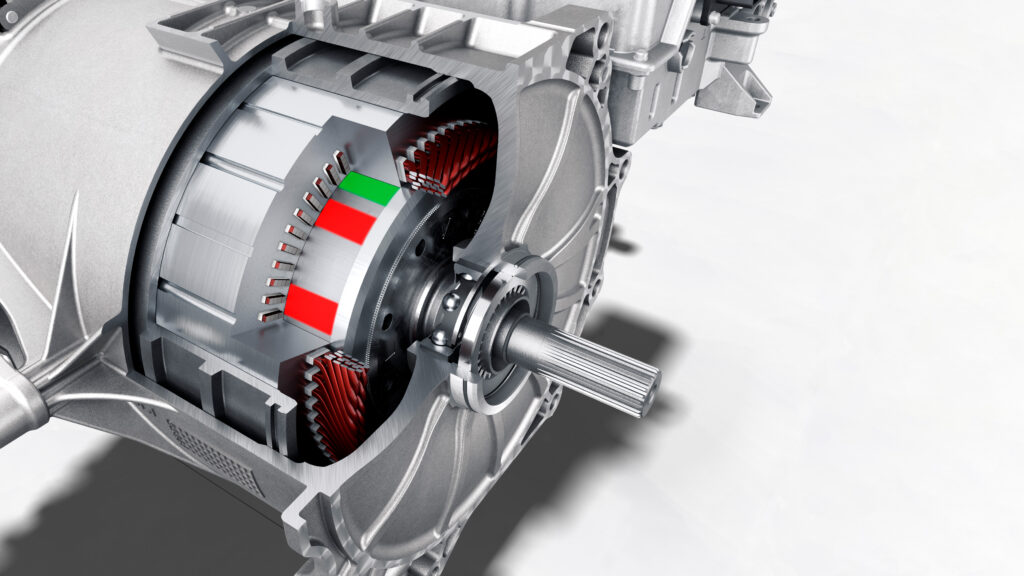
Porsche calls this method ‘hairpin winding’ and claims the more densely packed increase the amount of copper in the stator to 70 per cent, from 45 percent using conventional round wires.
In addition to market-leading power density, Porsche says these ‘hairpin’ stators can be more efficiently cooled.
Let’s talk battery packs
The Taycan’s 93.4kWh battery pack contains 396 pouch-type cells, distributed across 33 cell modules that each contains a separate voltage and temperature monitor.
Going for an 800v architecture has enabled Porsche to use lighter cabling that also takes up less space. Other benefits include quicker charging and the ability to deliver consistent high performance.
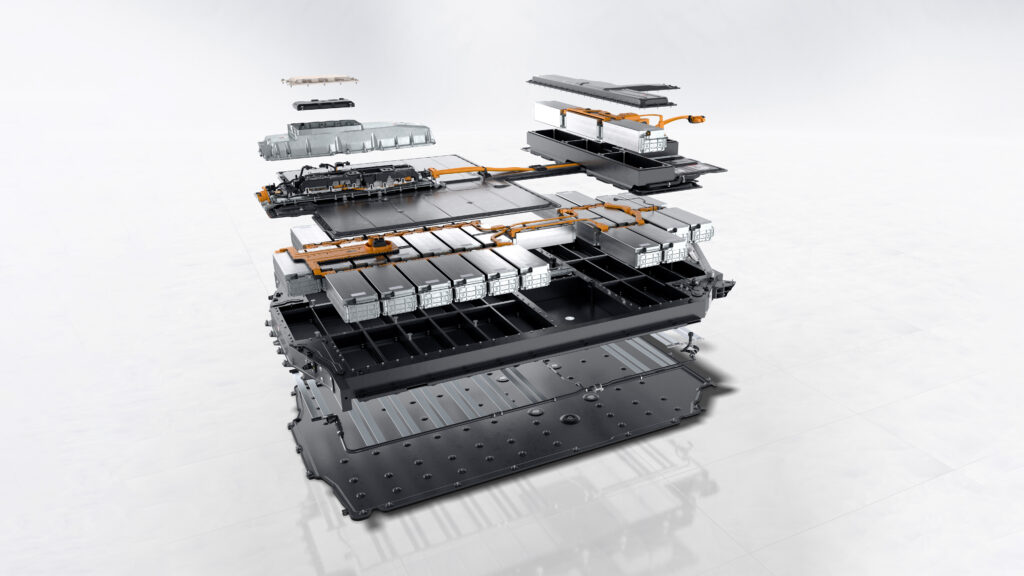
Inside the load-bearing, water-tight battery housing is a truss-like aluminium support frame for the batteries.
Beneath is a bulkhead plate to which cooling elements are attached with heat-conducting adhesive.
Building Taycan closer to home
DESPITE the Taycan having four doors, Porsche classifies it as a sports car. For this reason it is assembled in a new facility beside Porsche HQ in Zuffenhausen, where the 911, Boxster and Cayman are produced, rather than alongside the Panamera at Leipzig.
Two months after unveiling the Taycan-previewing Mission E concept at the 2015 Frankfurt motor show, Porsche started building a new body shop, with ground works for the new assembly facility commencing another six months later while the company got its head around the multiple new technologies and production processes required to mass produce a high-performance electric car.
Initial prototypes and development cars started rolling out of the pilot production centre just 12 months later.
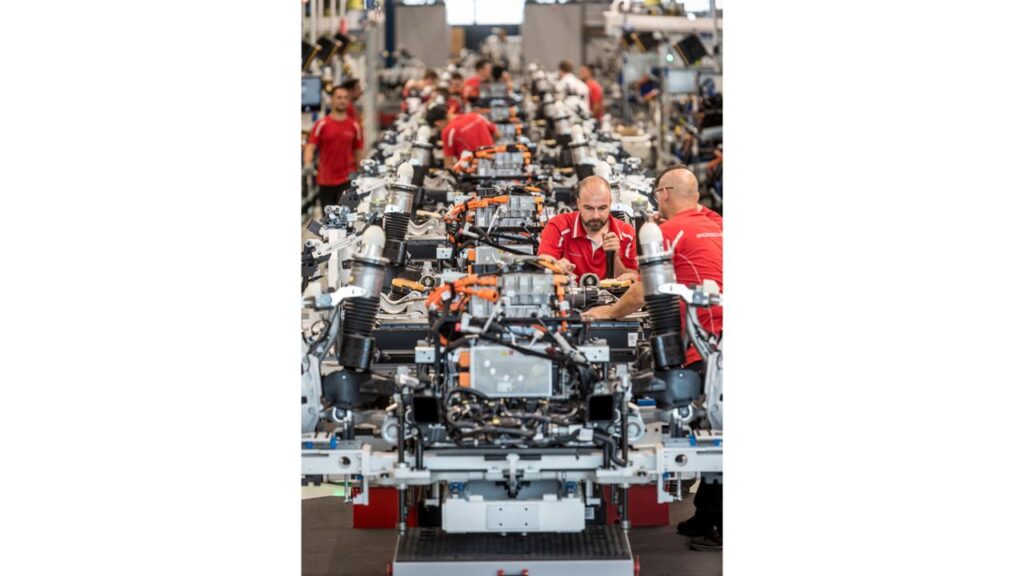
All the while, the main production lines at Zuffenhausen were at full capacity, cranking out a record 250 two-door sports cars per day.
Neighbouring the Zuffenhausen site are residential and industrial zones. Several roads and a rail line also run through the complex. Expanding it to produce the Taycan with minimum disruption to the local area has undoubtedly been a mammoth effort.
Production of the new model started with typical German punctuality, on September 9, Porsche having ploughed €1 billion ($A1.62b) into the factory construction. The company says it will have invested more €6b in vehicle electrification by 2022.
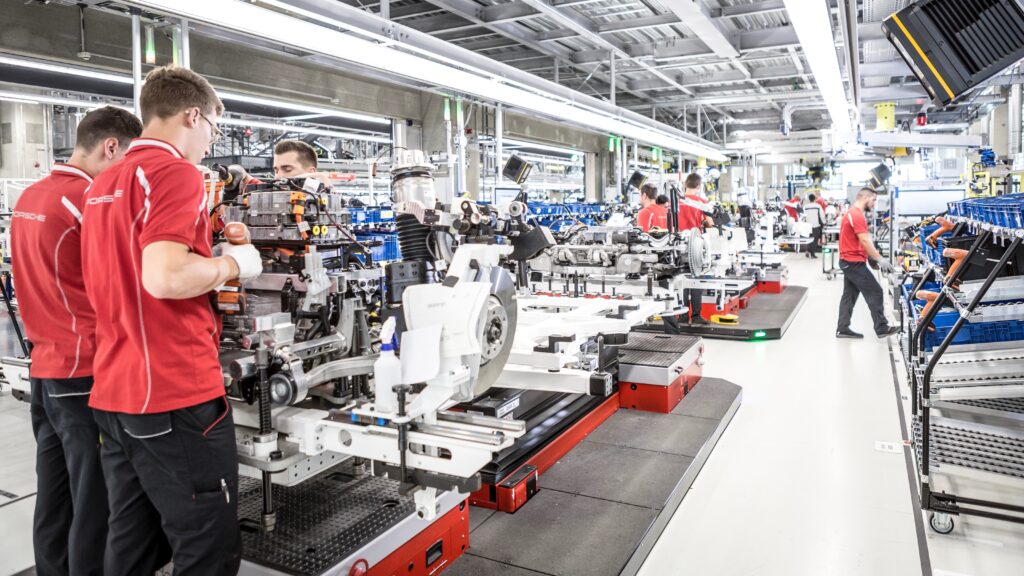
Taycan assembly takes place across several floors, in multiple buildings. To overcome a building height limit of 38 metres, Porsche dug 25 metres into the earth below.
Some older buildings had to be torn down during the process, but Porsche re-used some of the materials in construction of the new ones.
Porsche board member for production and logistics, Albrecht Reimold, said one of the greatest achievements was “coordinating the construction site traffic without impairing the significant regular flow at the plant”.
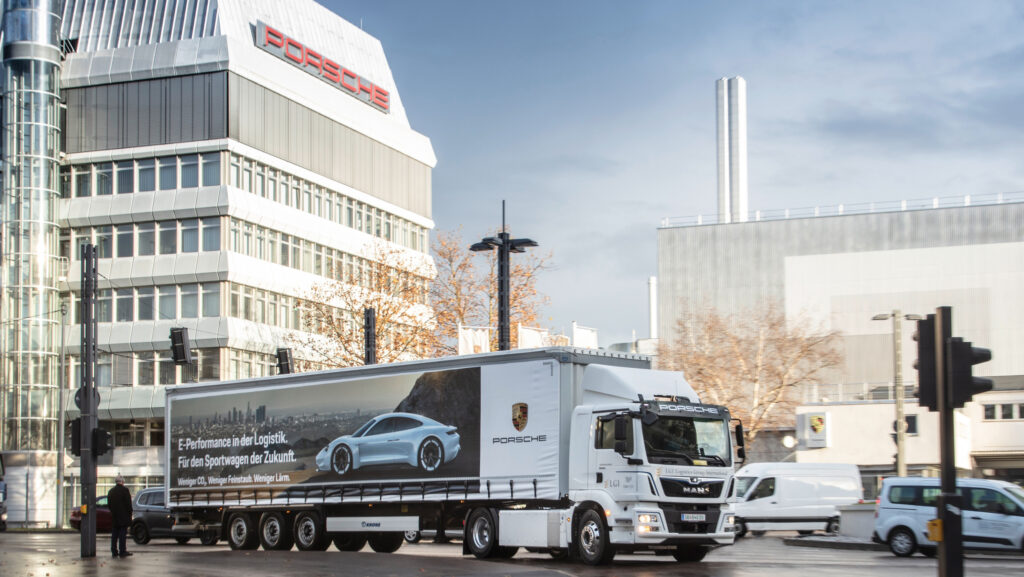
For perspective, Porsche issued 10,000 construction site passes to contractors from 130 companies during the project. That’s a lot of tradies coming and going.
“We’ve built a factory inside a factory – in the middle of the city and close to our neighbours, in the most confined of spaces, in the shortest possible time and without disrupting the existing sports car production facility running at full capacity,” said Reimold.
He claims Taycan production in will be carbon neutral and that Porsche’s goal is for “production to leave no environmental footprint whatsoever, with respect to the supply chain and the entire life cycle of our products”.
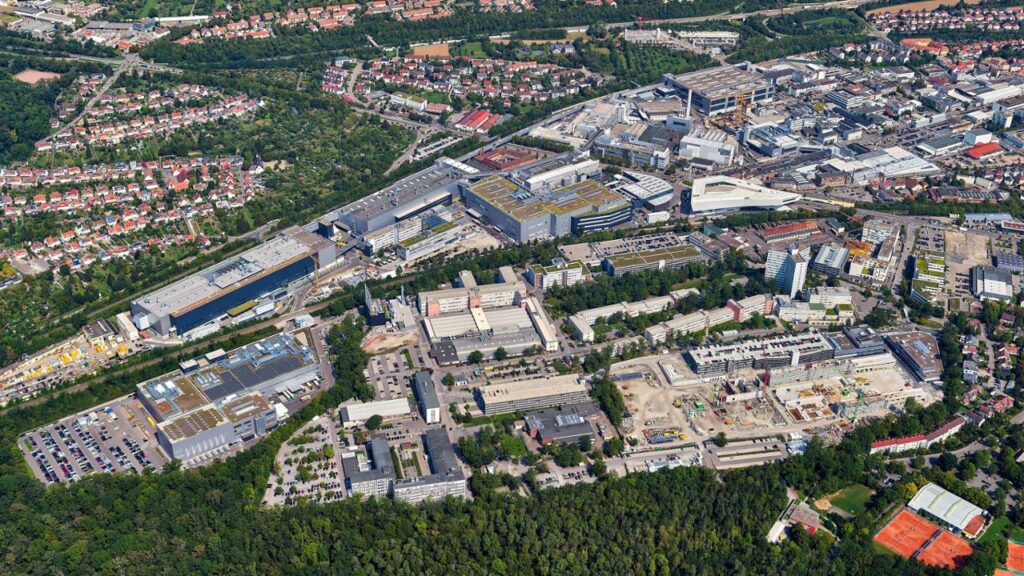
For example, a 126 square-metre section of factory facade that made from a hi-tech material that absorbs and breaks down harmful NOx emitted by internal combustion vehicles.
Porsche has also commissioned a fully electric MAN eTGM 32-tonne truck for transporting components.
- CategoriesIn SightGlass
- Tagselectric vehicles, EV, SightGlass News Issue 18, thermal management

